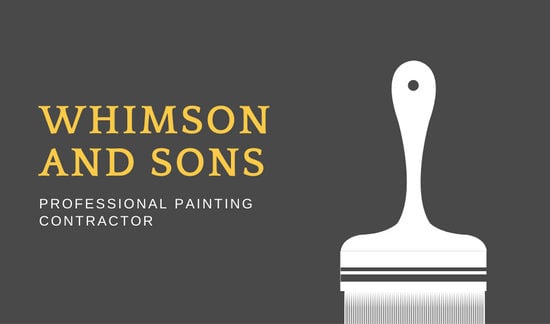Discover How Seasonal Factors Affect Industrial Exterior Paint Success And Find The Best Times To Guarantee Long Lasting Outcomes For Your Project
Discover How Seasonal Factors Affect Industrial Exterior Paint Success And Find The Best Times To Guarantee Long Lasting Outcomes For Your Project
Blog Article
Material Author-McLamb Bagger
When you're intending an industrial outside paint task, seasonal elements can make or break your results. You'll want to consider exactly how temperature level and humidity impact paint application and drying out times. Choosing the ideal period can ensure your paint sticks effectively and lasts much longer. But which seasons are truly the best for this type of work? Allow's check out the key elements that can influence your project's success.
The Impact of Temperature Level on Paint Application
When you're intending a business outside painting task, the temperature level can substantially impact exactly how well the paint sticks and dries.
Ideally, you want to repaint when temperature levels range in between 50 ° F and 85 ° F. If it's as well cold, the paint may not treat correctly, bring about issues like peeling off or cracking.
On the other hand, if it's too warm, the paint can dry out also rapidly, protecting against proper adhesion and leading to an irregular coating.
You must additionally consider the time of day; early morning or late afternoon uses cooler temperature levels, which can be much more positive.
Constantly check the producer's suggestions for the specific paint you're utilizing, as they typically provide guidance on the excellent temperature variety for optimum results.
Humidity and Its Impact on Drying Times
Temperature level isn't the only ecological factor that affects your business outside painting task; moisture plays a substantial duty as well. High humidity degrees can reduce drying out times dramatically, influencing the overall top quality of your paint work.
When the air is saturated with dampness, the paint takes longer to treat, which can bring about problems like bad bond and a greater risk of mildew development. If you're painting on a specifically moist day, be gotten ready for extended delay times in between coats.
It's critical to check neighborhood climate condition and plan accordingly. Ideally, go for moisture levels in between 40% and 70% for optimum drying out.
Keeping these factors in mind guarantees your project stays on track and provides a long-term finish.
Best Seasons for Commercial Outside Painting Projects
What's the very best season for your commercial external paint projects?
Spring and very early autumn are usually your best choices. Throughout these periods, temperatures are mild, and moisture levels are frequently reduced, developing perfect problems for paint application and drying.
Prevent summertime's intense heat, which can cause paint to completely dry too quickly, leading to inadequate bond and coating. Similarly, wintertime's chilly temperature levels can impede appropriate drying and treating, taking the chance of the long life of your paint job.
Go for days with temperatures between 50 ° F and 85 ° F for optimal outcomes. commercial interior painter twin cities in mind to inspect the regional weather forecast for rain, as damp conditions can wreck your task.
simply click the next website around these aspects ensures your painting job runs smoothly and lasts longer.
Final thought
Finally, intending your commercial exterior painting jobs around seasonal considerations can make a significant distinction in the result. By scheduling work throughout the perfect temperatures and humidity levels, you'll make certain better adhesion and drying out times. Keep in mind to watch on regional weather report and pick the correct time of year-- springtime and very early fall are your best options. Taking these steps will aid you achieve a long lasting and professional finish that lasts.
